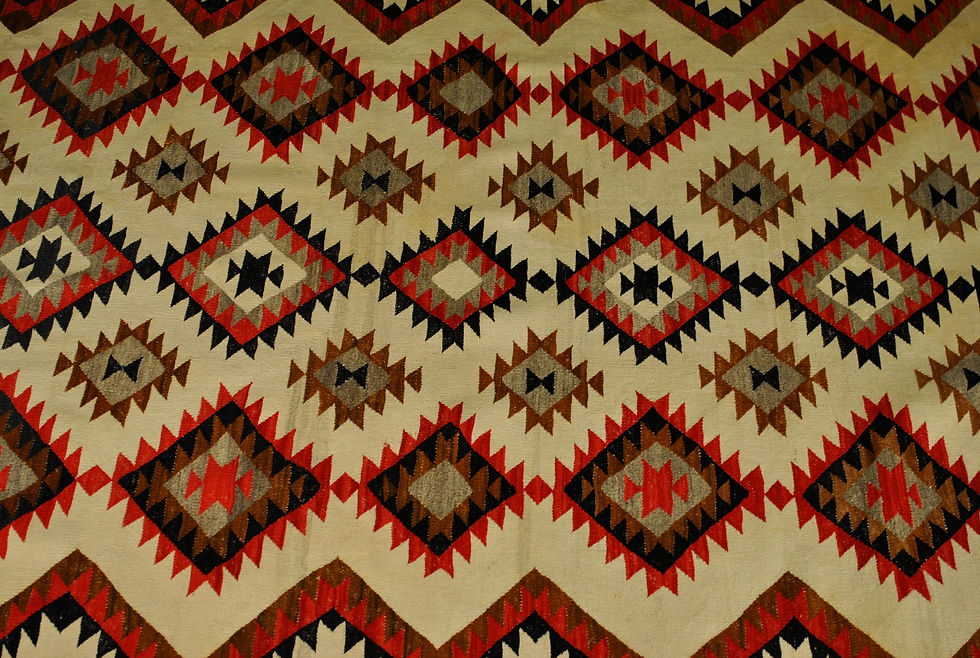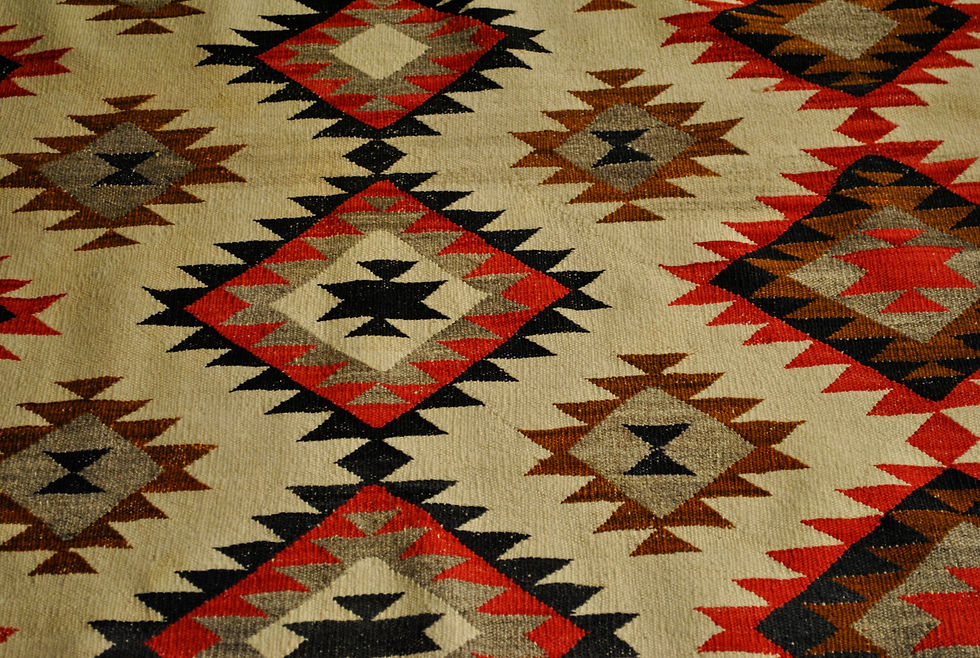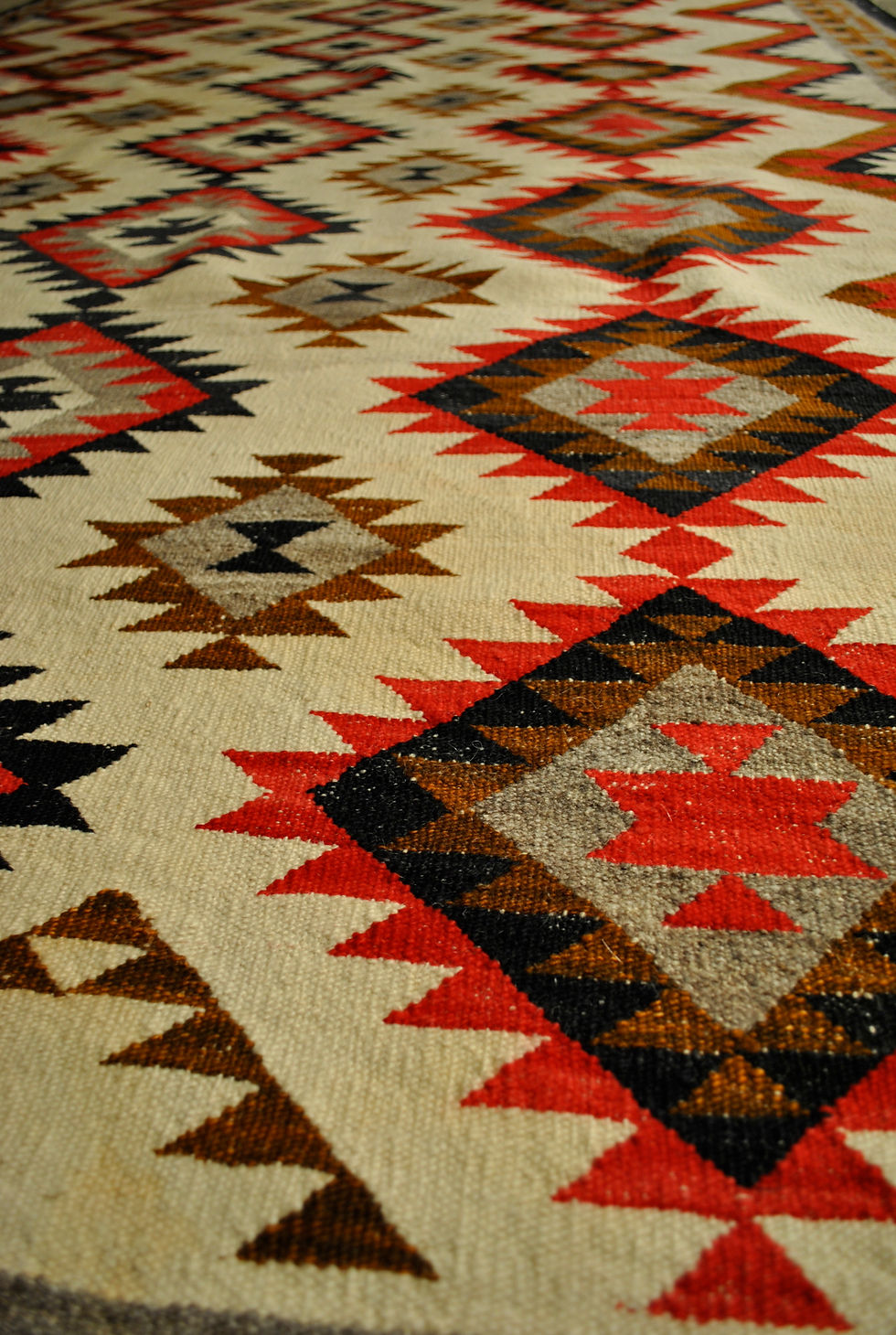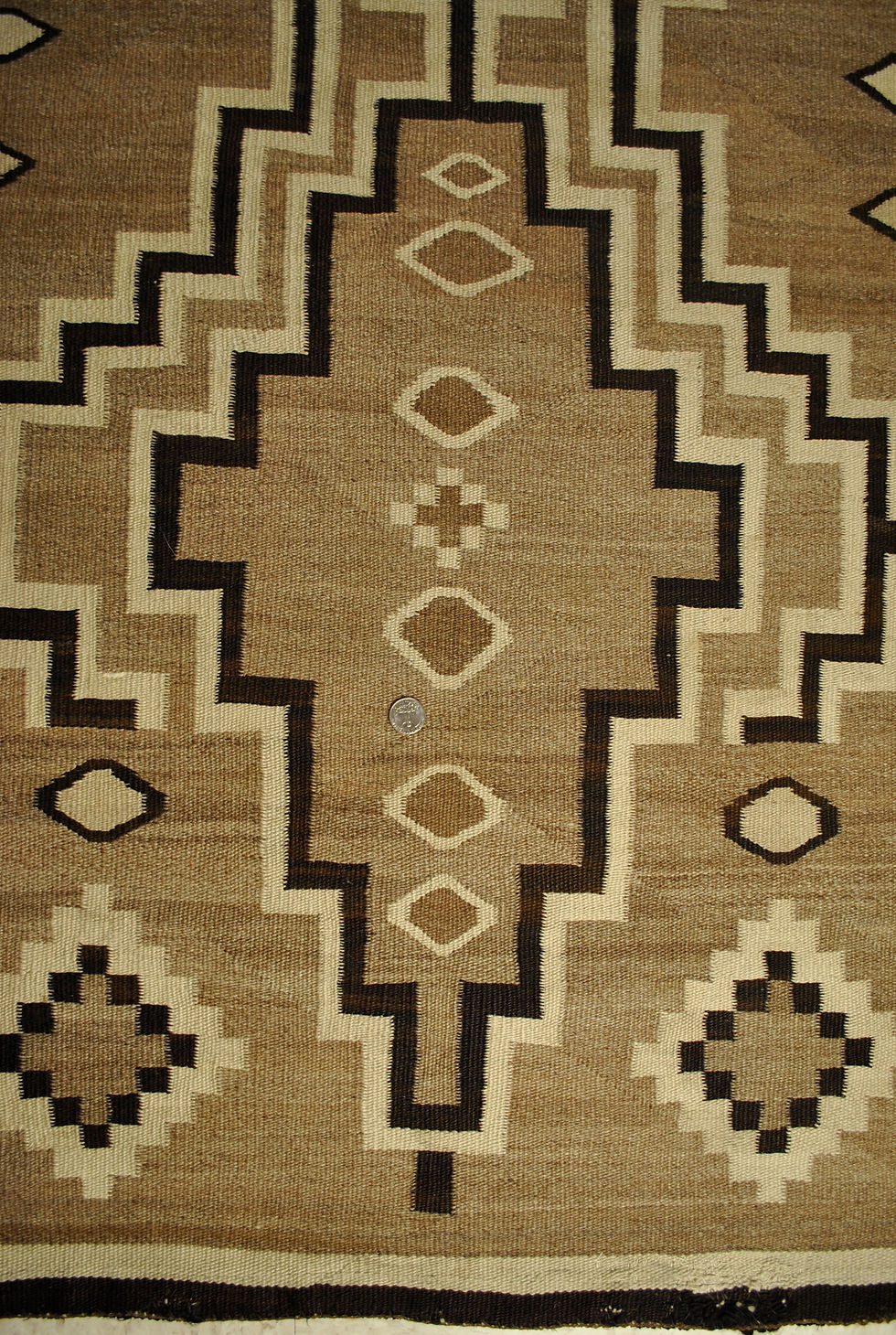The Jim and Vanita Oelschlager
Native American Ethnographic Collection

Navajo Rug ca. early 1900s Spun Wool, Dyed Germantown Yarn. L140” x W78”

Navajo Rug ca. early 1900s Spun Wool, Dyed Germantown Yarn. L140” x W78”

Navajo Rug ca. early 1900s Spun Wool, Dyed Germantown Yarn. L140” x W78”

Navajo Rug ca. early 1900s Spun Wool, Dyed Germantown Yarn. L140” x W78”

Two Gray Hills Rug ca. 1920 Navajo. Hubble Trading Post, Arizona. H68” x W39”

Two Gray Hills Rug ca. 1920 Navajo. Hubble Trading Post, Arizona. H68” x W39”

Two Gray Hills Rug ca. 1920 Navajo. Hubble Trading Post, Arizona. H68” x W39”

Two Gray Hills Rug ca. 1920 Navajo. Hubble Trading Post, Arizona. H68” x W39”

Chief Blanket 2nd Phase ca. 1860-1890 Navajo. Spun Wool, Dyes. L72” x W62”
By the 1880s, the Santa Fe Railroad was bringing tourists from the eastern U.S., and trading posts were opening on Navajo land.
In 1903, a trader named John Moore published a mail-order catalogue featuring Navajo rugs and promoting sale to the Anglo market. By the 1920s, Fred Harvey Hotels were built along the Santa Fe routes and featured demonstrations by Navajo weavers (always women) to entertain the visitors and encourage purchases in the hotel stores. Eastern wealthy patrons bought rugs to use in their “great camps” in upper New York State.
Navajos stopped weaving for their own use, instead preferring more western-style clothing and blankets, and concentrated on producing weavings for tourists and commercial traders. From their earliest domestic weaving to the artistic creations of the twenty-first century, Navajo weavers have continued to adapt their art to new materials and forms. Weavings that once covered their shoulders, floors, and beds now hang as valued possessions on walls of museums, offices, and homes all over the country.
Navajo, or Dineh, as the people call themselves, migrated in small groups (as did related groups called Apache) from what is now western Canada. They were a hunting and gathering culture and lived in small extended family groups, but changed their cultural patterns when they settled in the Southwest. Their language belongs to the Athabaskan language family, and their migration was tracked by the language connection. There is no evidence as to why they migrated south, or exactly when they did so. Although opinions vary, migration occurred from sometime between 900 CE and 1400 CE.
The Navajo settled among the western Pueblo in what is now Arizona. They lived on both the high mesas and in the canyons, building simple shelters called hogans. In some cases they lived in former Anasazi areas, such as at Canyon de Chelly. They cultivated the regional crops of corn, beans, squash and other vegetables, and hunted small game and deer. The Navajo people were skilled at adaptation and cultural borrowing. They adopted many ideas from the Pueblo, from whom they learned to weave with locally grown cotton.
Because the Navajo lived in scattered hogans, not in villages, as did the Pueblo, they were regarded as inferior and were treated differently by both the Spanish and United States’ governments. Their cultural story is complex, from their migration from Canada to the Southwest, to becoming the largest modern tribal group. The Navajo Nation now comprises about a fourth of Arizona, as well as parts of New Mexico and Utah.
Before the Spanish arrived, the Navajo weavings were used for the household—for blankets, clothing, and shawls. The weavings were traded to other native groups in the region and northward, and were a status symbol for Plains Indians. Often called “Chief Blankets,” these weavings were for wearing around the shoulders. The term “Chief Blanket” comes from the Plains Indians, as the Navajo did not have chiefs in their social structure.
Navajo culture, as all native cultures of the entire southwest, changed dramatically when the Spanish arrived in the mid 1500s. The missionaries brought new religious ideas and tried forced conversion, and the military added new governmental structure. The Spanish also brought horses and sheep. The horse gave the Navajos a new form of transportation, and sheep provided both wool for weaving and meat for their diet.
Navajo became skilled horsemen and began raiding Spanish-controlled villages and pueblos. Part of the Spanish response was to steal Navajo girls to work as slaves in their households. The women were already skilled at weaving cotton, but as slaves the women learned weaving with wool, using new dyes and styles favored by the Spanish households. They did, however, still use Navajo-style looms.
All Native Americans were affected adversely by European political and social exploitation, but the Navajo were affected triply—by Spanish, Mexican, and United States’ governments. In1821, Mexico won independence from Spain and the Santa Fe Trail became a major trade route from the east. In 1848, the U.S. annexed the New Mexico Territory. The U.S. government could not make the Navajo stop raiding villages and conform to Indian policy, so they banished the entire Navajo Tribe, imprisoning them at Bosque Redondo reservation at Fort Sumner in New Mexico. During the conflict with the Navajo, the U.S. military burned extensive Navajo fields and orchards.
During the five-year confinement at Bosque Redondo, Navajo lives and culture were changed. Weaving styles evolved during this time: instead of using cotton, they changed to using wool yarns, as well as different dyes. When the Navajo finally returned to their homeland, sheep herding became their major occupation.